Normal Elementary Phonics Worksheets for Ages 4-7
9 filtered results
-
From - To
Enhance your child's reading skills with our engaging Normal Elementary Phonics Worksheets for ages 4-7! These worksheets are designed to introduce young learners to essential phonics concepts, helping them recognize letters, sounds, and build foundational reading skills. Each activity is fun, interactive, and age-appropriate, fostering a love for reading while promoting literacy. With vibrant visuals and easy-to-follow instructions, children will enjoy practicing letter sounds and word recognition at their own pace. Perfect for home or classroom use, these printables are an excellent resource for parents and educators aiming to support early learning. Start your phonics journey today!
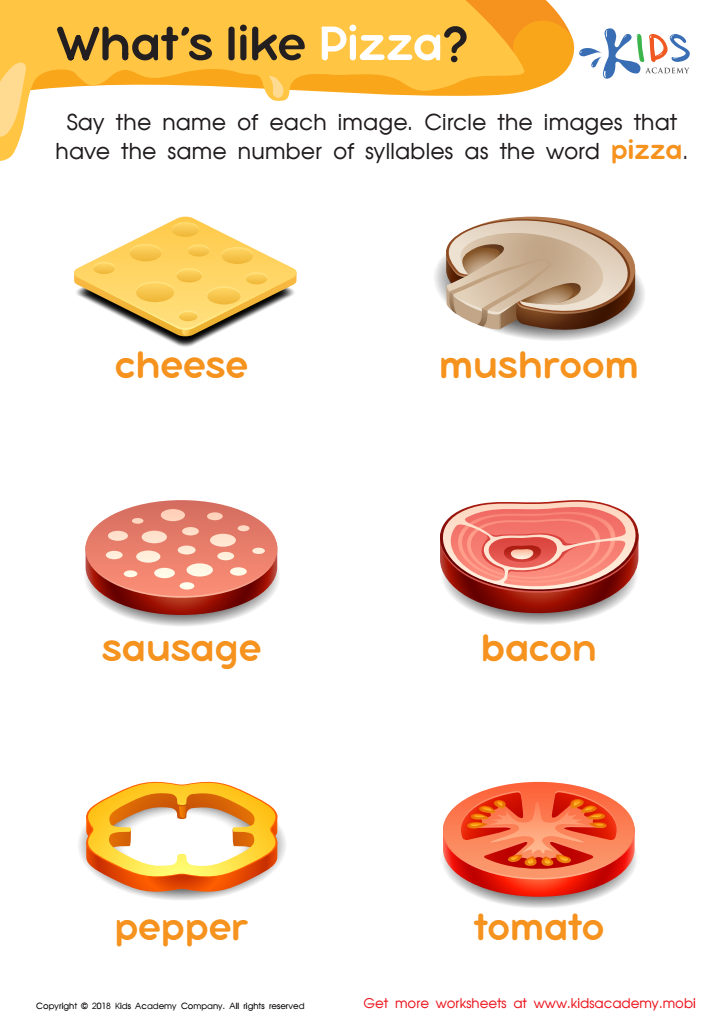

What's Like Pizza? Worksheet
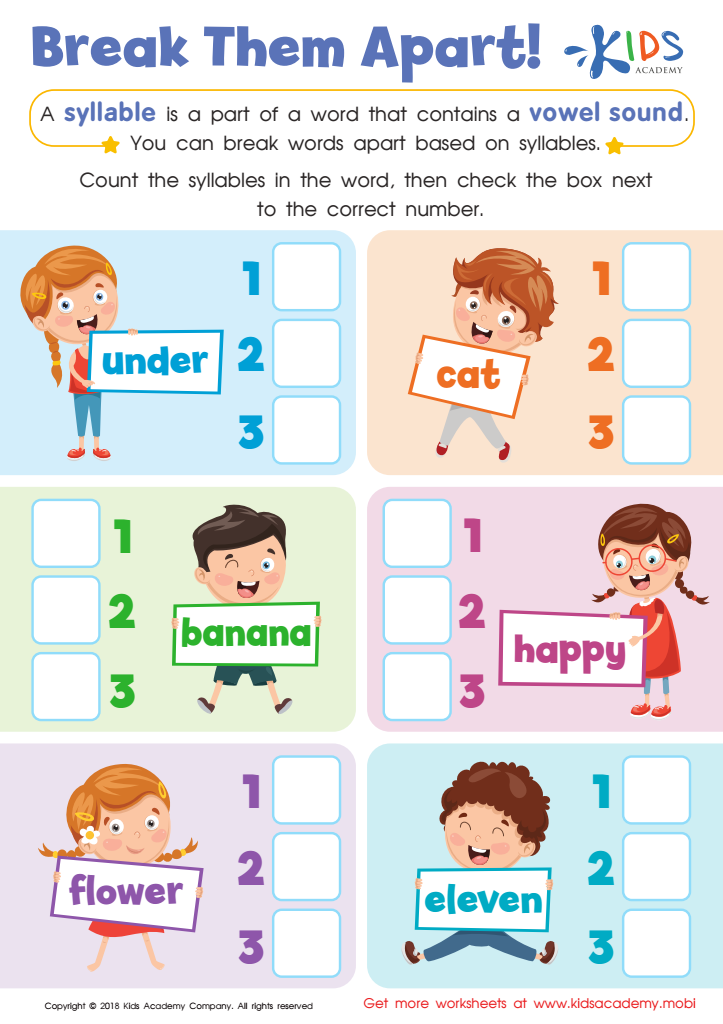

Reading: Break Them Apart Worksheet
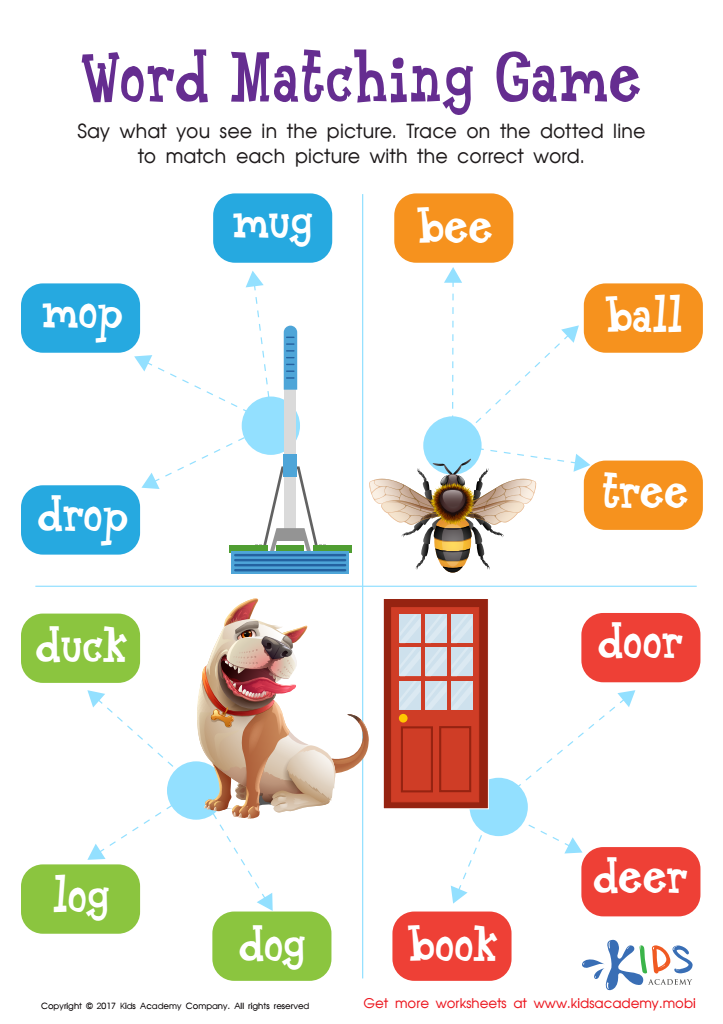

Word Matching Game Worksheet
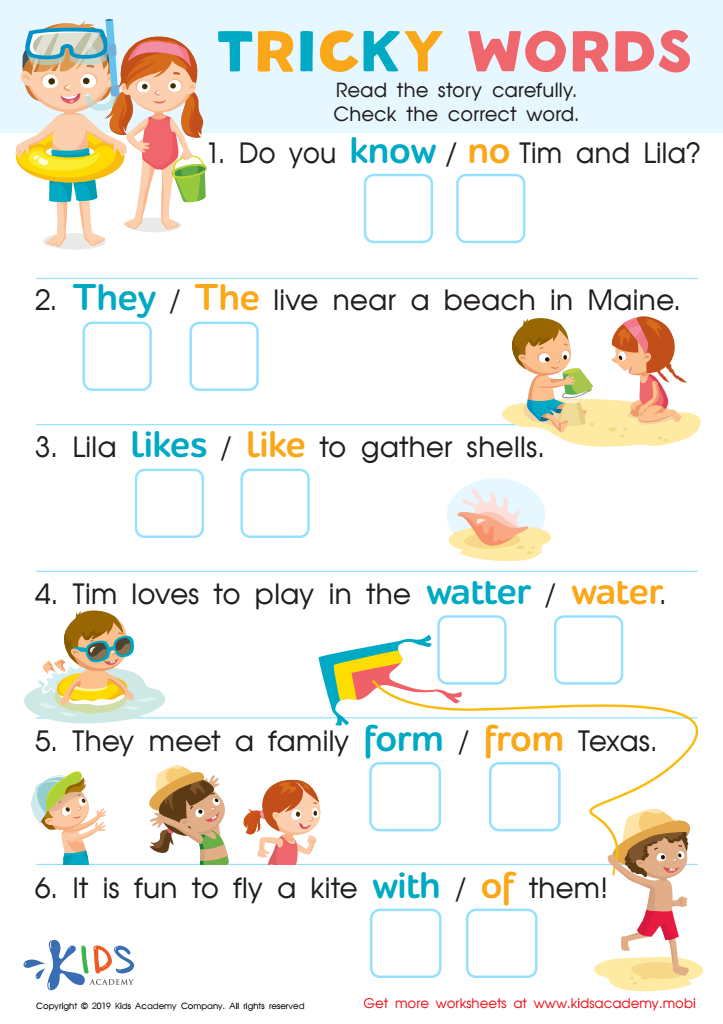

Tricky Words Worksheet


How Many Syllables? Worksheet
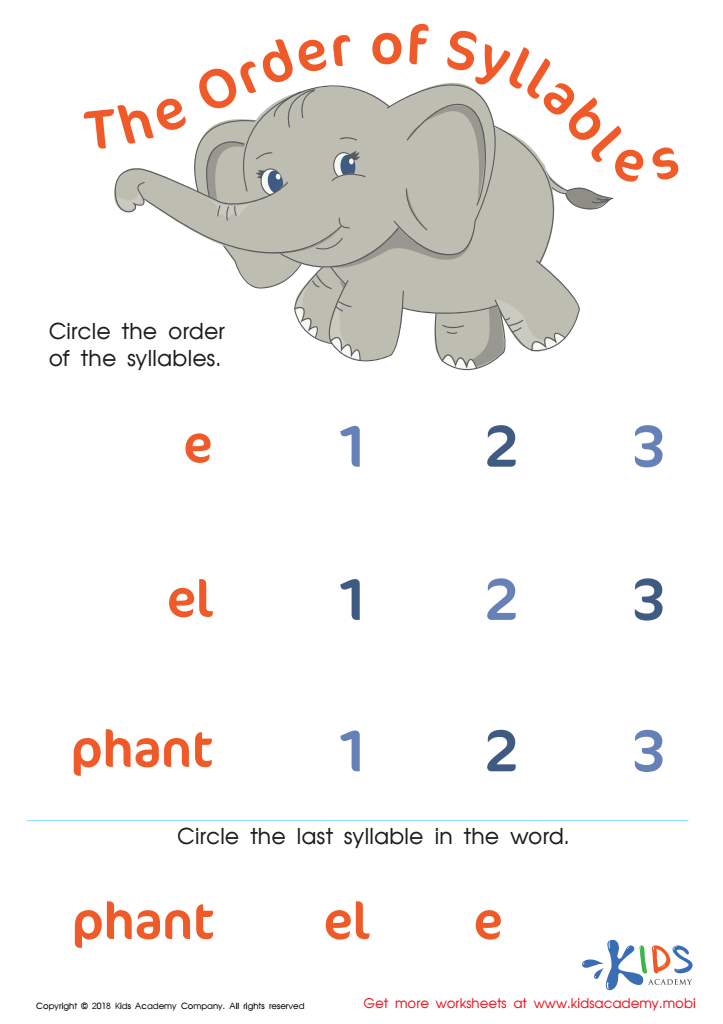

The Order of Syllables Worksheet
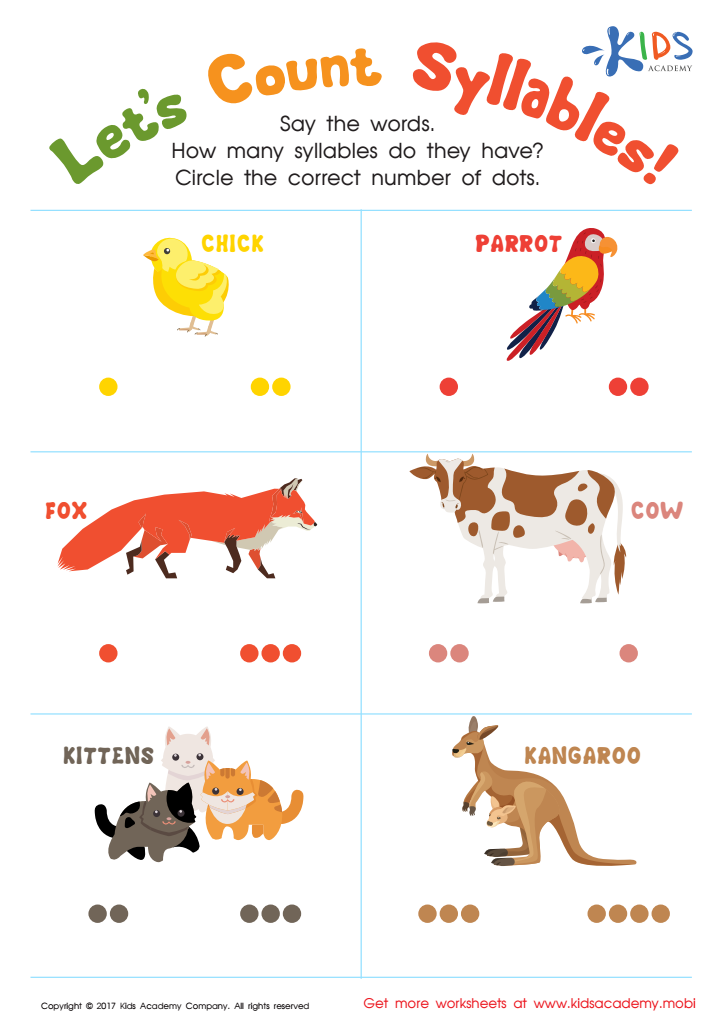

Lets Count Syllables Worksheet
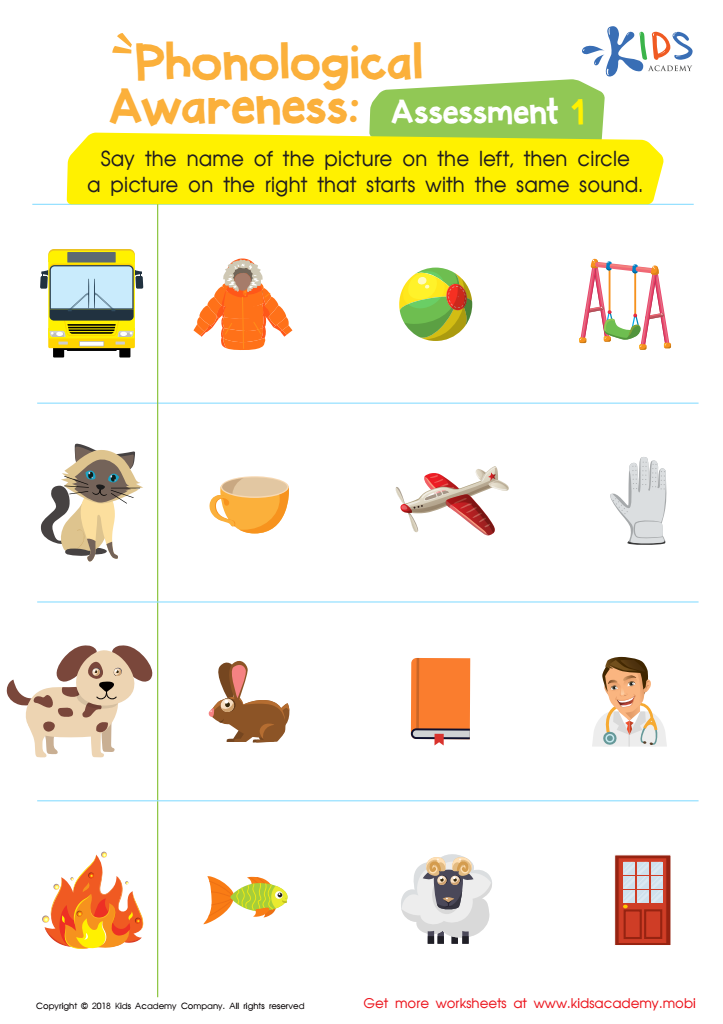

Phonological Awareness: Assessment 1 Worksheet


1, 2 or 3? Worksheet
Parents and teachers should be invested in Normal Elementary Phonics for ages 4-7 because it serves as a crucial foundation for developing proficient reading skills. During these formative years, children are not only learning the fundamentals of language but also building cognitive abilities that will serve them throughout their academic careers.
Normal Elementary Phonics emphasizes the systematic relationship between letters and sounds, enabling young learners to decode new words independently. This method encourages confidence and a love for reading, facilitating greater engagement with texts. When children comprehend phonics, they can understand complex concepts sooner, which leads to improved performance in other subject areas.
Moreover, proficiency in phonics enhances children's spelling and writing skills, foundational components of effective communication. In a world rich with information, strong reading abilities are imperative for success, both academically and in everyday life.
By investing time and resources into phonics education, parents and teachers actively contribute to a child's literacy development. This tailored approach can help identify any learning difficulties early on, ensuring personalized strategies can be implemented, promoting a brighter future for every child. Thus, embracing Normal Elementary Phonics is essential for nurturing capable readers who will thrive in their educational journeys.
 Assign to My Students
Assign to My Students
















